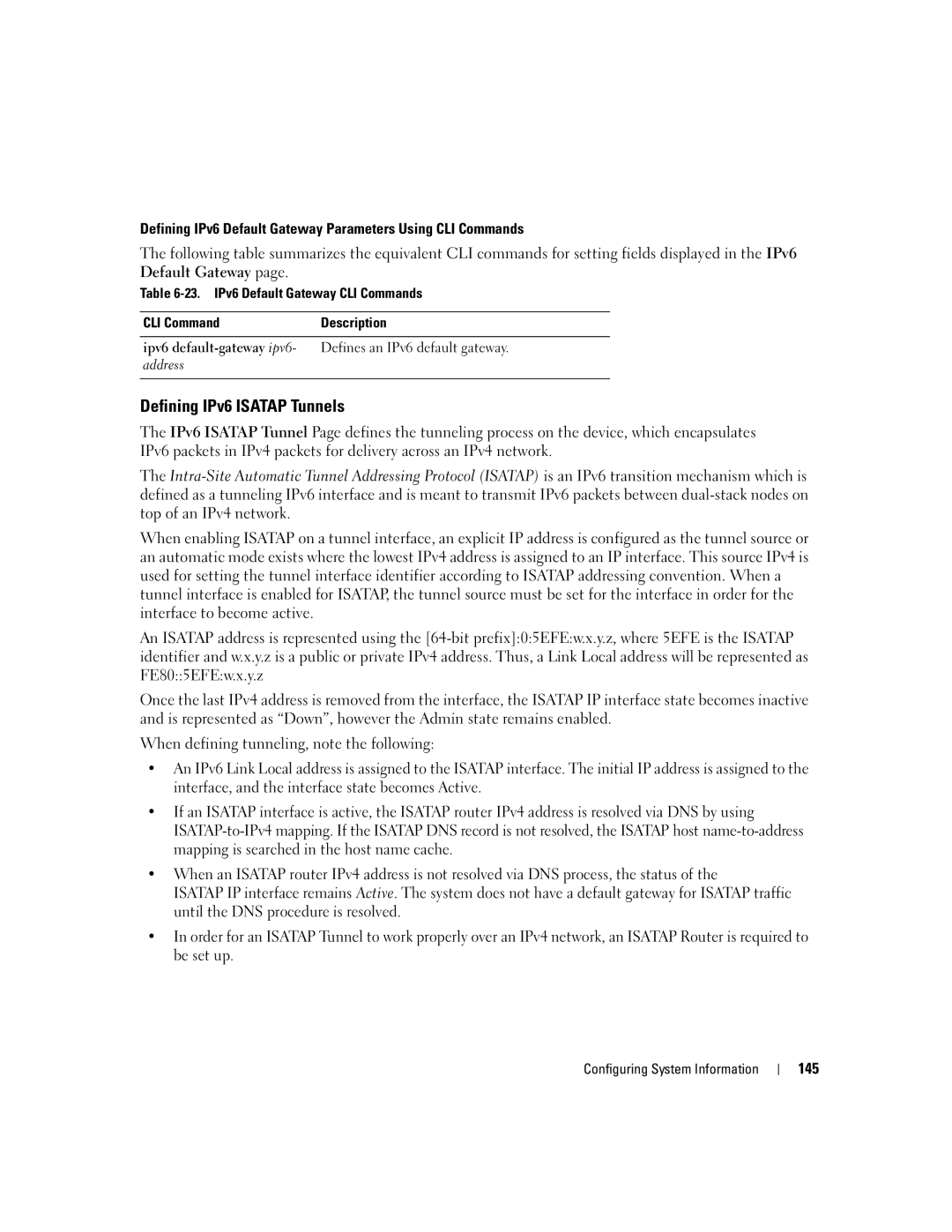
Defining IPv6 Default Gateway Parameters Using CLI Commands
The following table summarizes the equivalent CLI commands for setting fields displayed in the IPv6 Default Gateway page.
Table
CLI Command | Description |
ipv6
Defining IPv6 ISATAP Tunnels
The IPv6 ISATAP Tunnel Page defines the tunneling process on the device, which encapsulates IPv6 packets in IPv4 packets for delivery across an IPv4 network.
The
When enabling ISATAP on a tunnel interface, an explicit IP address is configured as the tunnel source or an automatic mode exists where the lowest IPv4 address is assigned to an IP interface. This source IPv4 is used for setting the tunnel interface identifier according to ISATAP addressing convention. When a tunnel interface is enabled for ISATAP, the tunnel source must be set for the interface in order for the interface to become active.
An ISATAP address is represented using the
Once the last IPv4 address is removed from the interface, the ISATAP IP interface state becomes inactive and is represented as “Down”, however the Admin state remains enabled.
When defining tunneling, note the following:
•An IPv6 Link Local address is assigned to the ISATAP interface. The initial IP address is assigned to the interface, and the interface state becomes Active.
•If an ISATAP interface is active, the ISATAP router IPv4 address is resolved via DNS by using
•When an ISATAP router IPv4 address is not resolved via DNS process, the status of the
ISATAP IP interface remains Active. The system does not have a default gateway for ISATAP traffic until the DNS procedure is resolved.
•In order for an ISATAP Tunnel to work properly over an IPv4 network, an ISATAP Router is required to be set up.
Configuring System Information
145
